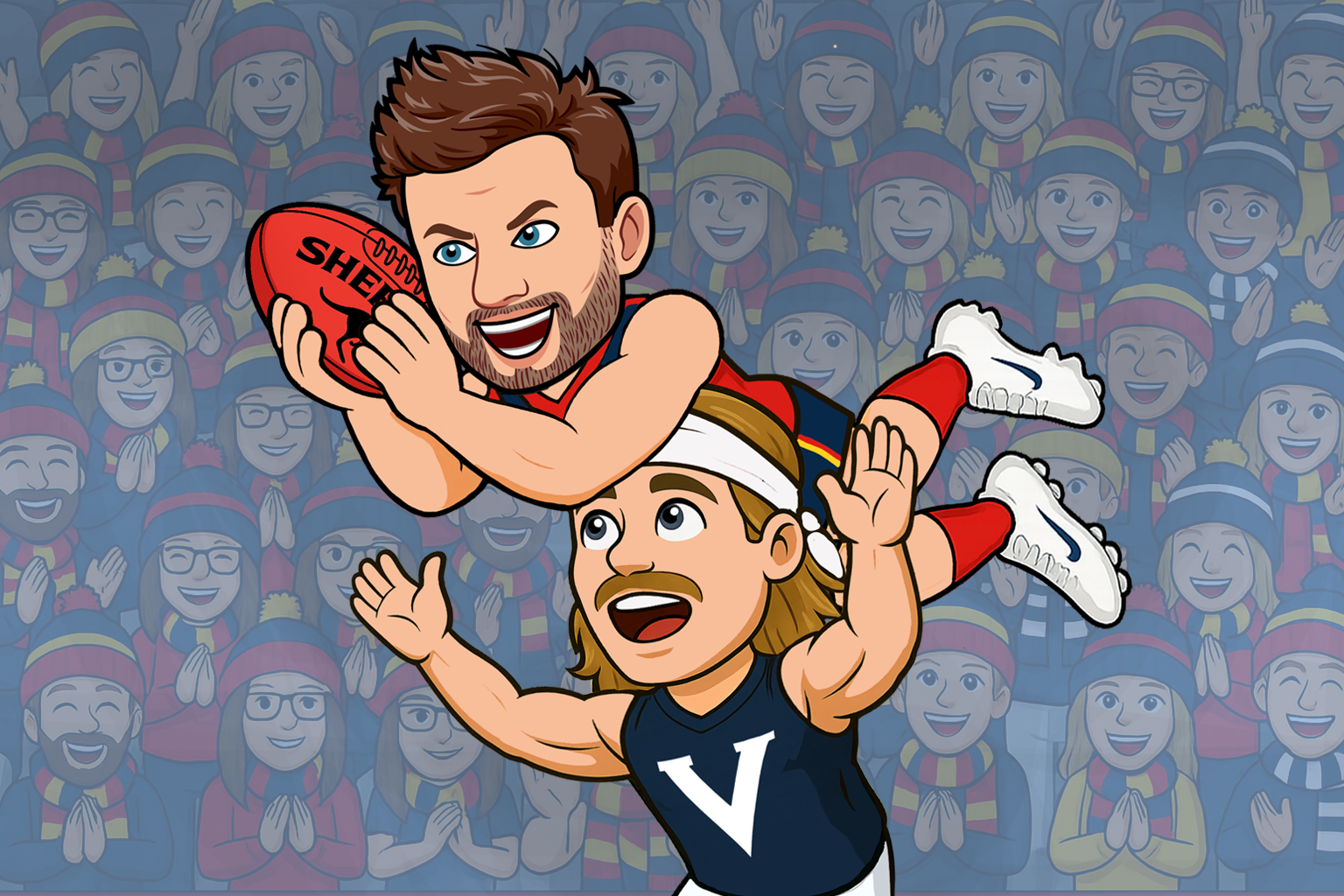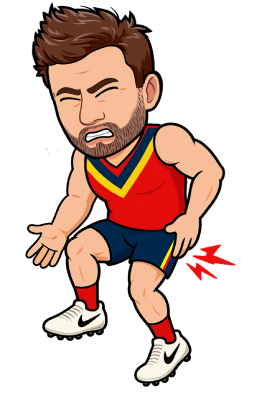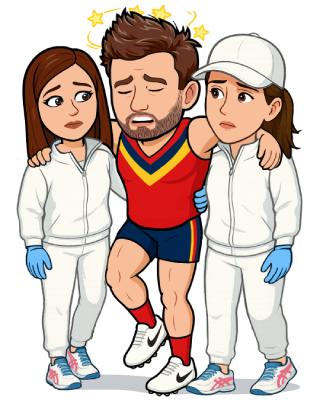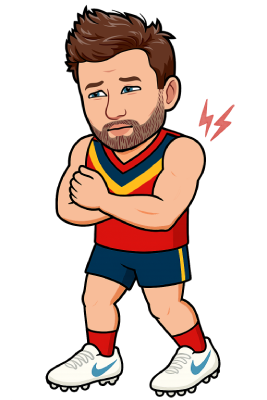The complete guide to AFL injuries
The First Aid guide every football community needs
Whether you’re a footy player for the AFL or SANFL playing at Adelaide Oval or playing grassroots level on any of the hundreds of ovals across South Australia from Morphett Vale to Mount Gambier, injuries are all part of the game. Unfortunately it happens far too often. The siren sounds, players clash and suddenly someone's down and not getting up. The crowd goes quiet, teammates gather around and everyone's looking for someone who knows what to do.
After being a footy player and coach for many years, as well as providing first aid training to a number of football clubs in South Australia, I've learned that the difference between a player missing one game and missing an entire season often comes down to what happens in those first crucial minutes. Let's take a look at some common football injuries and what every footy player, coach and parent needs to know about football first aid and injury response.
The reality of AFL injuries in South Australia
The numbers that hit hard
According to Australian Institute of Health and Welfare, there were 4,300 AFL-related hospitalisations nationally in 2021 - 2022, with contact with another person being the most common specified cause.
570 hospitalisations per 100,000 participants aged 15 and over
15-19 age group shows the highest injury rates in hospitalisation data
Lower limb injuries are most prevalent in hospitalisation cases
According to the Australian Football League:
Hamstring strains are the highest injury category
Concussions are the second most common
There were 14.34 missed matches per club due to hamstring strains on average
5.44 missed AFLW matches per club during 2023 season with ACL injuries
The big five: AFL's most devastating injuries
1. Hamstring strains
Hamstring strains are the number 1 injury attained in professional AFL, with 4.71 injuries per club per season in 2023.
Why they dominate SA footy:
High-speed running on large oval fields
Explosive acceleration from stationary positions
Fatigue during long quarters in hot conditions
Inadequate warm-up in time-pressured match situations
2. Concussion
We are seeing the impact of concussion in footy more and more and the AFL are taking steps to ensure that it is taken seriously.
Common AFL concussion scenarios:
Head-to-head contact during marking contests
Head hitting ground after heavy tackles
Whiplash-type injuries during bumps
Accidental knee or elbow contact to head
Observable signs that you can see:
Player appears dazed or confused
Slow to get up after contact
Balance problems or unsteady movement
Blank or vacant stare
Difficulty following simple instructions
Personality changes or unusual behavior
Symptoms player may report feeling:
Headache or pressure in head
Dizziness or feeling "foggy"
Nausea or vomiting
Memory problems
Sensitivity to light or noise
Feeling "not right"
Immediate first aid for a suspected head injury:
If there has been a loss of consciousness or altered consciousness at any time, call 000
Follow DRSABCD
Protect the casualty’s neck whilst maintaining a clear airway
Identify and control any significant bleeding with direct pressure if possible
If unresponsive and not breathing, commence CPR
AFL Concussion Guidelines mandate minimum one match missed for any diagnosed concussion, regardless of how "mild" it seems. If you are a player or coach of community football, you should also check out the AFL’s Concussion Management guidelines for community football.
Recognising and assisting in the management of any suspected concussion
Check out HeadCheck which is an AFL-approved concussion management app that should be utilised to recognise and assist in the management of any suspected concussion.
3. ACL injuries
ACL injuries are among the most serious in AFL. According to the AFL, the incidence of ACL injuries in matches has continued to decrease with 2.51 ACL injuries per 1000 player hours in the 2023 season.
High-risk AFL scenarios:
Landing from marking contests with knee turned inward
Sudden direction changes while running at speed
Plant-and-pivot movements during gameplay
Contact to the side of knee during tackles
4. Shoulder dislocations
Shoulder injuries account for 11.5 missed games per club per season in professional AFL, with shoulder sprains and dislocations being the most common upper body injury requiring time away from play. This is largely due to the nature of the game which includes tackling, landing on an outstretched arm and awkward falls and collisions.
If the injury is to the shoulder, you want to:
Help the casualty sit or lie down in a comfortable position.
Support their arm in a position that provides the least amount of discomfort
Call 000
Do not attempt to force the fracture back in to place.
5. Ankle sprains
While ankle injuries contribute only 3% of AFL hospitalisations, they remain common at community level. Professional AFL data shows ankle sprains account for 7.2 missed games per club per season.
AFL-specific mechanisms that can contribute to ankle sprains:
Landing awkwardly from marking contests
Stepping in holes or on uneven ground
Contact with other players' feet during play
Sudden direction changes at speed
Immediate first aid response for sprains:
Follow the RICER plan:
Rest - rest the casualty and the injury
Ice - apply ice for 20 minutes
Compression - apply compression by wrapping the injury with a compression bandage firmly to extend well beyond the injury
Elevation - elevate the injury
Referral - refer to a medical professional for diagnosis and ongoing care
Do not apply ice directly to the skin.
Advanced emergency scenarios
Multiple injury situations
When one player has several injuries:
Priority Assessment (DRSABCD):
Danger: Ensure scene safety
Response: Check consciousness
Send for help: Call 000 if needed
Airway: Ensure clear and protected
Breathing: Check for normal breathing
CPR: Start if required
Defibrillation: Use AED if available and trained
Building your football first aid arsenal
Essential equipment for football clubs
Safework Australia recommends the following be included in a workplace first aid kit so you can easily create one for your netball club:
Basic club first aid kit:
Instant ice packs
Crepe bandages
Triangular bandages
Saline
Adhesive dressings strips
Scissors
Disposable gloves
Emergency rescue blanket
Creating effective emergency action plans
According to the AFL’s Game Day Emergency and Safety Guide, it is important to be prepared for an emergency. The Guide includes making sure you have appointed someone (eg. Team Manager) to coordinate the response if the case of an incident as well as:
The appointed person is appropriately attired and trained
Emergency contact details and procedures are available, up-to-date and clearly displayed
An ambulance has clear access to enter the venue and/or field of play
First aid kit is accessible for all matches and is fully stocked
Ice purchased and available for use
It is also strongly recommended that and AED is accessible for all matches and that it has been serviced.
Injury prevention: the best first aid
Evidence-based warm-up protocols
Proper warm-up is essential for injury prevention in AFL. While specific percentage reductions vary by study, comprehensive warm-up programs consistently reduce injury rates across football codes.
The Footy First Program: Developed by the AFL in conjunction with Monash University, Griffith University and Sports Medicine Australia, the Footy First program is the official AFL injury prevention protocol designed specifically for Australian Rules Football. This evidence-based program targets groin, hamstring, knee, and ankle injuries - the most common in AFL.
Your Action Plan for safer football
For players
Master proper warm-up techniques and make them non-negotiables
Learn first aid so you can be ready to help teammates
Communicate injuries honestly as hiding problems makes them worse
Follow return-to-play protocols and make sure you resist pressure to return early
Support club safety initiatives and be a leader in injury prevention
For coaches
Get qualified in first aid as it's part of your duty of care
Implement evidence-based warm-ups
Create injury reporting systems and track patterns to learn from
Build medical professional relationships so you have the right contacts ready to go if you need them
Model safe behaviour to show that health comes first
For parents
Support club first aid training and then volunteer to learn skills
Understand return-to-play protocols so you don't pressure any early returns
Know emergency procedures so you can be prepared to help
Advocate for proper equipment as safety is worth the investment
Stay educated so you can keep learning about injury prevention
For clubs
Invest in comprehensive first aid training for multiple people, not just one or better yet organise everyone at the club to do their training
Develop and practice emergency action plans and make them second nature for everyone
Create dedicated safety committees that focus their attention on prevention
Partner with medical professionals to build ongoing relationships
Regular equipment and facility audits so that you can maintain safety standards
Respect the game, protect the players
Australian Rules Football will always involve injury risk. It's inherent in a sport that combines high-speed collisions with athletic contests. But understanding these risks and responding appropriately when injuries occur is what separates smart football communities from those that learn the hard way.
Most importantly, players feel valued and protected, not just for what they contribute on the field, but as whole people whose health and future matter.
The goal isn't to eliminate all injury risk - that would eliminate the sport we love. The goal is to be prepared, respond intelligently and ensure that when things go wrong, we're ready to make them right.
Football teaches us about courage, teamwork and resilience. Let's make sure it also teaches us about taking care of each other.
Ready to give your football community the skills they need when it matters most? Our group or individual first aid blended or face-to-face courses prepare coaches, trainers, players and volunteers to respond effectively to help your club play it safe while keeping the competitive spirit alive.
References and Sources
This comprehensive guide is based on current evidence-based research and clinical guidelines:
Primary Medical Guidelines:
Guideline 2 - Managing an Emergency, ANZCOR
Australian and New Zealand Committee on Resuscitation (ANZCOR). (2024). Guideline 9.2.2 - Stroke Recognition and Management
Australian and New Zealand Committee on Resuscitation (ANZCOR). (2024). Guideline 9.3.4 - Heat Induced Illness (Hyperthermia)
Sports Medicine Australia. (2024). Concussion in Sport Guidelines
Primary AFL Research and Data:
Australian Football League. (2024). AFL and AFLW Injury Reports 2023. Available at: https://www.afl.com.au/news/1211880/afl-and-aflw-injury-reports
Australian Institute of Health and Welfare. (2024). Sports injury in Australia: Australian rules football. Available at: https://www.aihw.gov.au/reports/sports-injury/sports-injury-in-australia/contents/featured-sports/australian-rules-football
Saw, R., et al. (2018). Injuries in Australian Rules Football: An Overview of Injury Rates, Patterns, and Mechanisms Across All Levels of Play. Sports Health. Available at: https://www.ncbi.nlm.nih.gov/pmc/articles/PMC5958447/
Government Health and Safety Data:
Australian Institute of Health and Welfare. (2024). National Sports Injury Database
SA Health. (2024). Emergency Department Sports Injury Statistics
Safe Work Australia. (2024). Community Sports Safety Guidelines
Country Health SA. (2024). Rural Emergency Response Guidelines
Sports Science and Prevention Research:
British Journal of Sports Medicine. (2024). Contact Sport Injury Prevention Strategies
Sports Medicine Research Centre, La Trobe University. AFL Injury Prevention and Management Studies
University of Adelaide. Heat Illness in Australian Sport Research
Flinders University. Community Sports Injury Prevention Programs
Emergency Response Resources:
SA Ambulance Service. Sports Emergency Response Protocols
Emergency Services SA. Community Emergency Preparedness Guidelines
Red Cross Australia. Sports First Aid Standards and Training Guidelines
AFL Players' Association. Player Health and Safety Guidelines
The information provided in this blog offers general insights only. The content is not intended to serve as medical advice and if you are experiencing a medical emergency, please call 000 immediately.







